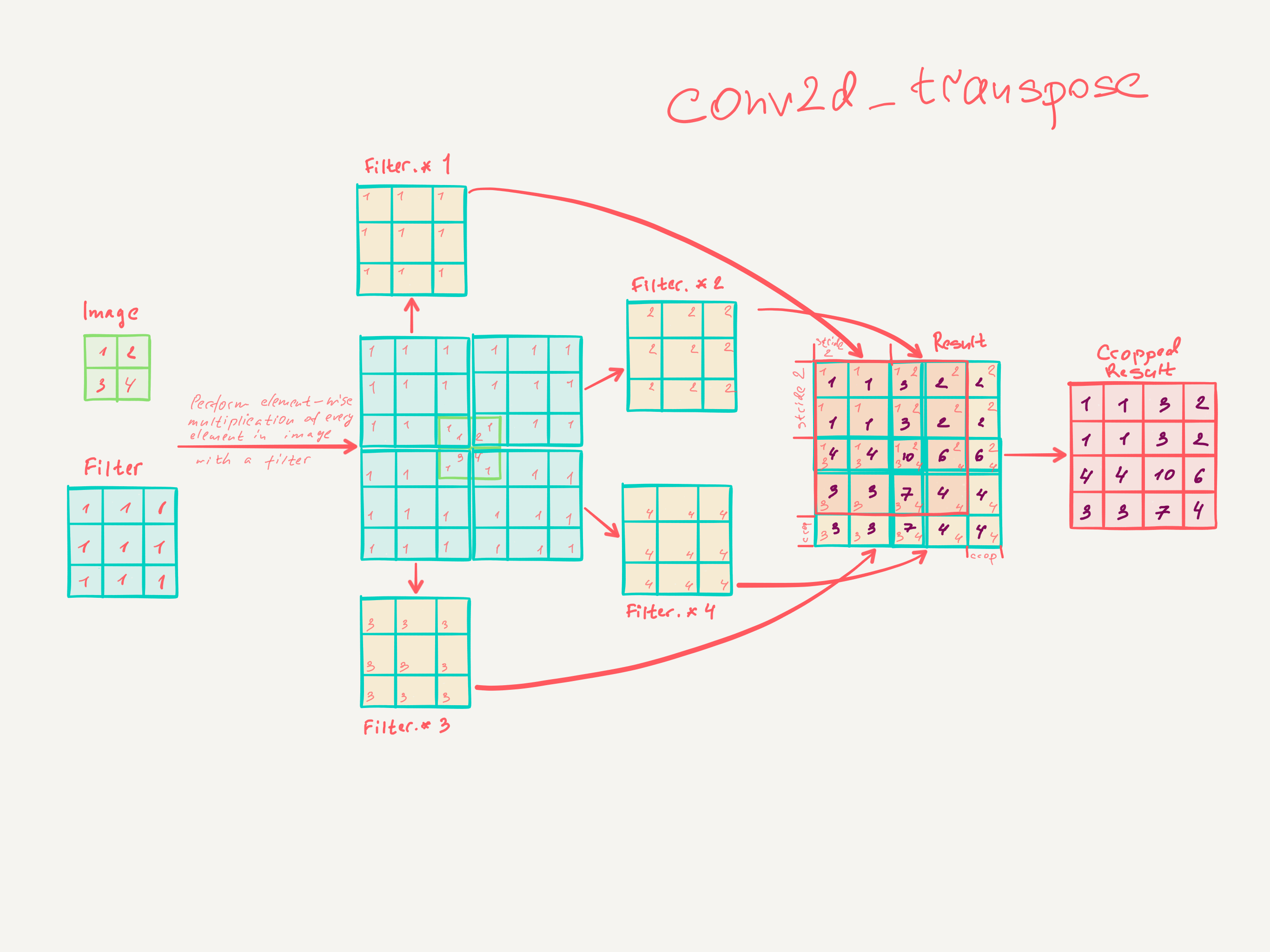Step by step math explaining how transpose convolution does 2x upsampling with 3x3 filter and stride of 2:
The simplest TensorFlow snippet to validate the math:
import tensorflow as tf import numpy as np def test_conv2d_transpose(): # input batch shape = (1, 2, 2, 1) -> (batch_size, height, width, channels) - 2x2x1 image in batch of 1 x = tf.constant(np.array([[ [[1], [2]], [[3], [4]] ]]), tf.float32) # shape = (3, 3, 1, 1) -> (height, width, input_channels, output_channels) - 3x3x1 filter f = tf.constant(np.array([ [[[1]], [[1]], [[1]]], [[[1]], [[1]], [[1]]], [[[1]], [[1]], [[1]]] ]), tf.float32) conv = tf.nn.conv2d_transpose(x, f, output_shape=(1, 4, 4, 1), strides=[1, 2, 2, 1], padding='SAME') with tf.Session() as session: result = session.run(conv) assert (np.array([[ [[1.0], [1.0], [3.0], [2.0]], [[1.0], [1.0], [3.0], [2.0]], [[4.0], [4.0], [10.0], [6.0]], [[3.0], [3.0], [7.0], [4.0]]]]) == result).all() 
